
Star Trek: Armada is a real-time strategy video game for Microsoft Windows developed and published in 2000 by Activision. The game's look and feel is based primarily on Star Trek: The Next Generation, and features a few of its main characters and ships. Playable factions include the United Federation of Planets, the Klingon Empire, the Romulan Star Empire and the Borg. The game received mixed to positive reviews and was noted for being one of the better Star Trek games to be made. A sequel, Star Trek: Armada II, was released on November 16, 2001.
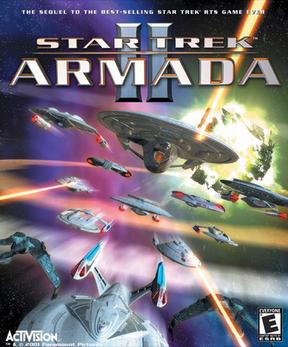
Star Trek: Armada II is a real-time strategy video game published by Activision in 2001, based upon the Star Trek universe. The game was developed by Mad Doc Software. It is the sequel to Star Trek: Armada. Star Trek: Armada II was released by Activision a year after they acquired the full rights to all the franchise holding of the video game's franchise from Viacom. It was the first of the three major Star Trek video game sequel titles that were released by Activision from 2001 until their departure from the franchise in 2003. On December 13, 2021, both Armada and Armada II were re-released on GoG.com, which had also released several other older Star Trek titles earlier that year.
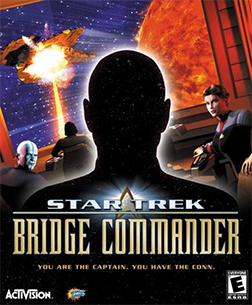
Star Trek: Bridge Commander is a space combat simulation video game for Windows, developed by Totally Games and published by Activision in 2002, based in the Star Trek universe.
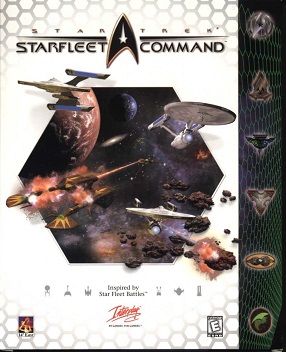
Star Trek: Starfleet Command is a computer game based on the table-top wargame Star Fleet Battles. It was developed by 14° East and Quicksilver Software and published by Interplay Entertainment. It was released in 1999 for Microsoft Windows. It simulates starship operations, ship-to-ship combat, and fleet warfare in the Star Trek universe. An expanded version was released in 2000 titled Star Trek: Starfleet Command - Gold Edition. It includes the latest patch and all the missions that were downloadable from the official website.
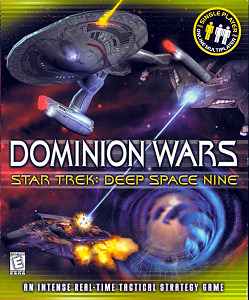
Star Trek: Deep Space Nine: Dominion Wars is a 2001 space combat/real-time tactics video game for Microsoft Windows developed by Gizmo Industries and published by Simon & Schuster. The game is based on the Star Trek TV show Star Trek: Deep Space Nine.

Star Trek: Invasion is a video game, released in 2000 for the Sony PlayStation console. The game was developed by Warthog Games and published by Activision. The game also has some distinction being developed by the same team responsible for the Colony Wars series.
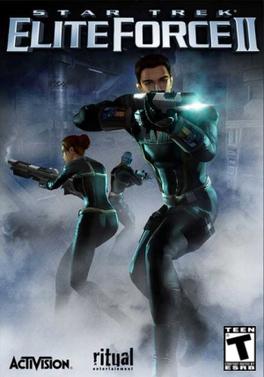
Star Trek: Elite Force II is a first-person shooter video game developed by Ritual Entertainment and published by Activision. It was released on June 20, 2003 for Microsoft Windows and later for Mac OS X. Elite Force II is a sequel to 2000's Star Trek: Voyager – Elite Force. Whereas the original game was powered by the first version of id Software's id Tech 3 engine, Elite Force II is based on a heavily modified version of the Quake III: Team Arena engine with Ritual's ÜberTools GDK, allowing for expansive outdoor environments and higher quality facial animations.

Star Trek Starfleet Command II: Empires at War is the sequel to Star Trek: Starfleet Command and the second in the series of real-time space combat games, developed by Taldren, Inc. and published by Interplay. A stand-alone expansion pack was released in June 2001 titled Starfleet Command: Orion Pirates.
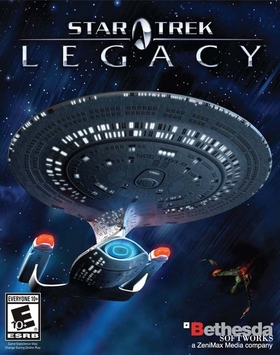
Star Trek: Legacy is a 2006 real-time tactics space combat video game for Microsoft Windows and Xbox 360 developed by Mad Doc Software and published by Bethesda Softworks in association with CBS Paramount Television and CBS Consumer Products. Originally slated for release in the fall of 2006 to coincide with the 40th anniversary of Star Trek, the Windows version was not released in North America until December 5, 2006, and the Xbox 360 version until December 15. In Europe, both the PC version and the Xbox 360 version were released on December 22, 2006.
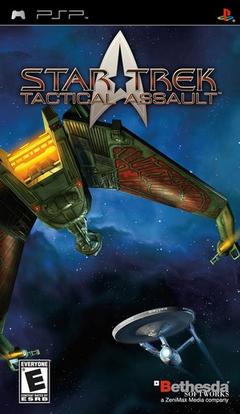
Star Trek: Tactical Assault is a Star Trek video game for the Nintendo DS and PlayStation Portable that was developed by Quicksilver Software, also the creators of Star Trek: Starfleet Command. The game is published by Bethesda Softworks, which published several other Star Trek games around that time. This would be the first game on a Nintendo platform to be published by Bethesda since the NES version of Home Alone in 1991.
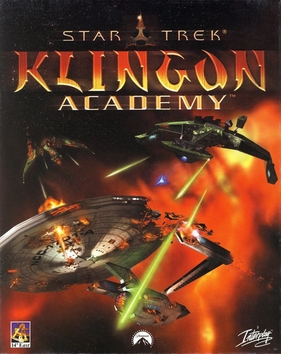
Star Trek: Klingon Academy is a space flight simulator video game developed by 14 Degrees East, an internal development house of publisher Interplay Entertainment. The game follows a young Klingon warrior named Torlek as he attends the Elite Command Academy, a war college created by General Chang to prepare warriors for a future conflict with the United Federation of Planets. Christopher Plummer and David Warner reprised their respective roles as Chang and Gorkon for the production of Klingon Academy.

Star Trek: Starfleet Command III is a Star Trek video game published in 2002. It was the fourth entry in the Starfleet Command series, and one of the last Star Trek games to be released by Activision. The game involves the a story-driven series of missions for three factions, that is conducted by controlling starships that are developed with RPG elements. The game was released for Windows operating system, and received generally positive reviews.

Star Trek: New Worlds is a strategy game published in 2000 by Interplay in which the player can choose to command the forces of the United Federation of Planets, Klingons or Romulans. The player's goal is to build successful colonies on a series of newly discovered planets while battling off competing factions.

Star Trek: Encounters is a video game set in the Star Trek fictional universe, which was released in 2006 for the PlayStation 2. The game was developed by Scottish studio 4J Studios for Bethesda Softworks and Ubisoft (EU).
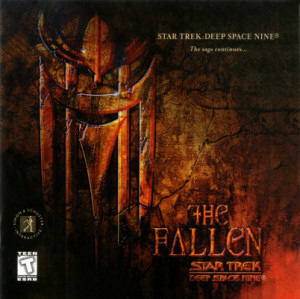
Star Trek: Deep Space Nine: The Fallen is a 2000 third-person shooter video game developed by The Collective and published by Simon & Schuster. The game is loosely based on a trilogy of novels by Judith and Garfield Reeves-Stevens called Millennium: The Fall of Terok Nor, The War of the Prophets and Inferno. The setting is the Deep Space Nine space station featured in the American science fiction television series Star Trek: Deep Space Nine.

Star Trek: Hidden Evil is a third-person action-adventure video game released in 1999 by Activision. It was developed by Presto Studios over the course of a year, and was specifically created for the casual gamer market. The plot followed up on the events in the film Star Trek: Insurrection, with the player portraying the character of Ensign Sovok, who works alongside Captain Jean-Luc Picard and Lt. Cmdr Data, with Patrick Stewart and Brent Spiner reprising their roles.
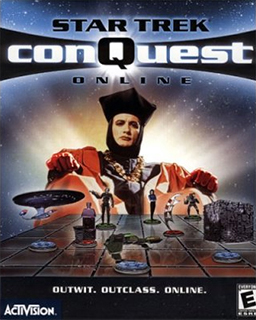
Star Trek: ConQuest Online was an online digital collectible card game set in the Star Trek universe released in June 2000 for the Microsoft Windows by Activision.

Star Trek: Voyager – Elite Force is a first-person shooter video game developed by Raven Software and published by Activision. The game was originally released on September 15, 2000 for Windows and Mac OS. A port for Mac OS developed by Westlake Interactive and published by Aspyr Media was released on November 20, 2002. Elite Force was ported to the PlayStation 2 by Pipe Dream Interactive and published by Majesco Entertainment on December 11, 2001.

















